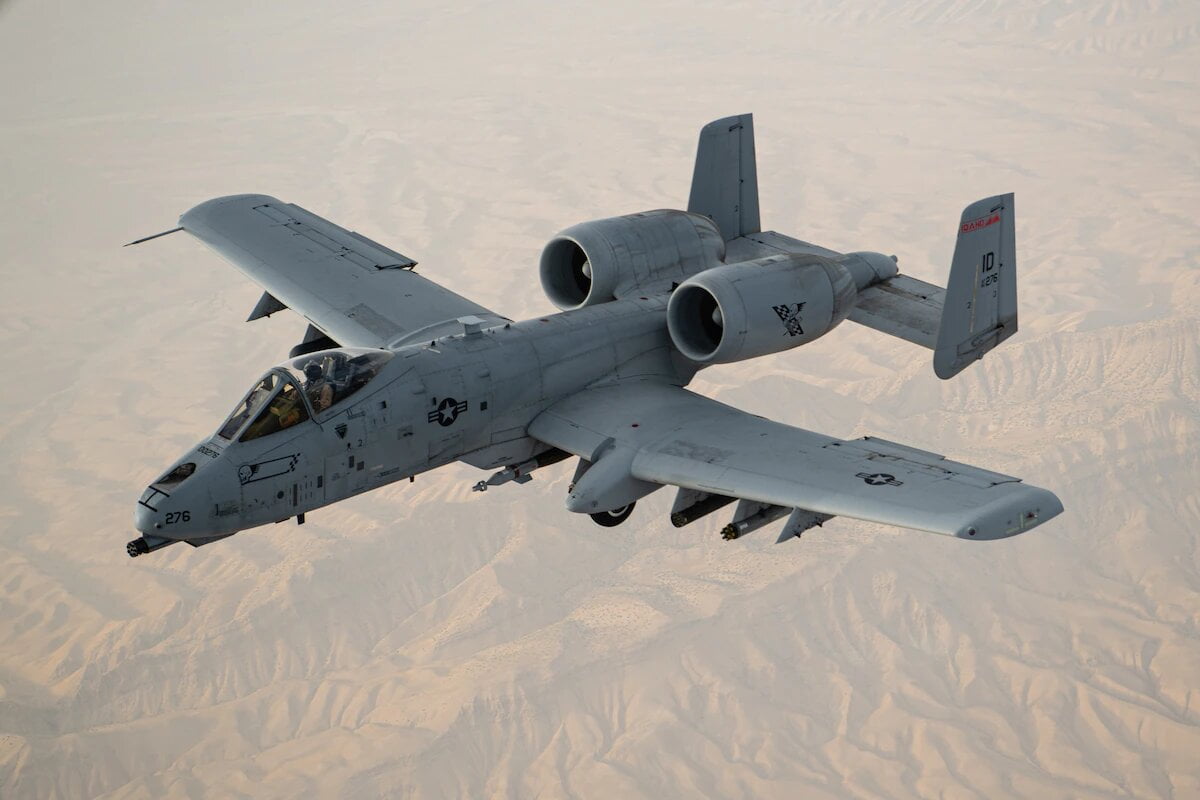The U.S. Air Force said last week that it is prepared to deliver A-10 Warthog aircraft to Ukraine, but Ukrainian pilots are more eager to fly F-16 Fighting Falcons, and there is a good chance they will receive them. At a time when the US and the rest of NATO are searching their arsenals for weaponry to support Ukraine resist the Russian invasion and reclaim lost territory, the offer to send A-10 ground-attack planes is made.
C.Q. Brown, Air Force Chief of Staff, and Secretary of the Air Force Frank Kendall both gave speeches at the annual Aspen Security Forum, which was held from July 19 to 22. Kendall suggested the A-10 Thunderbolt II when asked which aircraft the Air Force wants to sell to Ukraine. The choice of which aircraft to dispatch is “essentially up to the Ukrainians… older U.S. systems are an option,” Kendall added.
The A-10 Thunderbolt II, also known as the “Warthog,” was developed by the service in the late 1960s as a powerful ground-attack aircraft for close air support over contemporary battlefields. The 30-millimeter GAU-8/A seven-barrel gun aboard the A-10 can fire guided bombs, rockets, and air-to-ground missiles. The A-10 can sustain significant damage over the battlefield and maintain flight since it was built to strike Warsaw Pact tank columns.
The A-10 has been in use for many years; the 281 Warthogs in the Air Force’s fleet have an average age of 40 years. When I was in my 40s, shoulder-fired surface-to-air missiles like the SA-7 Strela and small-caliber cannons, at best controlled by radar, were the norm for air defences at low altitudes. But since then, the danger to the A-10 has changed to include more sophisticated weapons like the SA-14 and SA-16 as well as more guided missiles with far higher precision.
Because Eastern Ukraine is as flat as the American Midwest, this kind of attack would be impossible there. An A-10 would only have the Earth’s curvature as actual defence. A-10s would be visible to a front-line observer from considerably further away, and some of them would be equipped with surface-to-air missiles.
Similar low-altitude, high-risk missions flown by Ukrainian aircraft have resulted in significant losses. A contemporary of the A-10, the Su-25 “Frogfoot” ground-attack aircraft is now used by the Ukrainian Air Force (UAF). Eight, or more than half, of the 17 Su-25s used by the UAF before to the war had been shot down.
Military commanders in Ukraine made it quite apparent that they did not truly desire the A-10 soon after press stories about it surfaced. The F-16 Fighting Falcon, a multi-role fighter currently being replaced in the Air Force’s inventory by the F-35, is what the Ukrainians prefer because it is “quick and adaptable.” Due to its speed and agility, the F-16 would have a good chance of out-dogfighting Russian aircraft.
Adopting an American-built aircraft would provide Ukraine’s air force access to that country’s enormous stockpile of sophisticated guided weapons. Russian fighters and cruise missiles would be considerably more easily taken out by American AIM-120 AMRAAM missiles than by Ukraine’s outdated missile arsenal.
The AGM-154 Joint Standoff Weapon and the AGM-88 High Speed Anti-Radiation missile are only two examples of the air-to-ground weaponry that an F-16 can transport that have a longer range than an A-10. Even Russian vessels might be targeted by F-16s with AGM-84 Harpoon anti-ship missiles.
If Ukraine decides to purchase American fighters, it will probably discover that pilot training has already been covered. For 2023, the projected U.S. defence budget includes $100 million for Ukrainian fighter pilot training on American aircraft.
The clause has unusually strong bipartisan support in Congress and is quite likely to be included in the budget that President Biden signs. Early in 2023, Ukrainian F-16s may begin to patrol the nation’s skies. Early in 2022, that would have been unthinkable, but conflict often makes the unbelievable possible.
